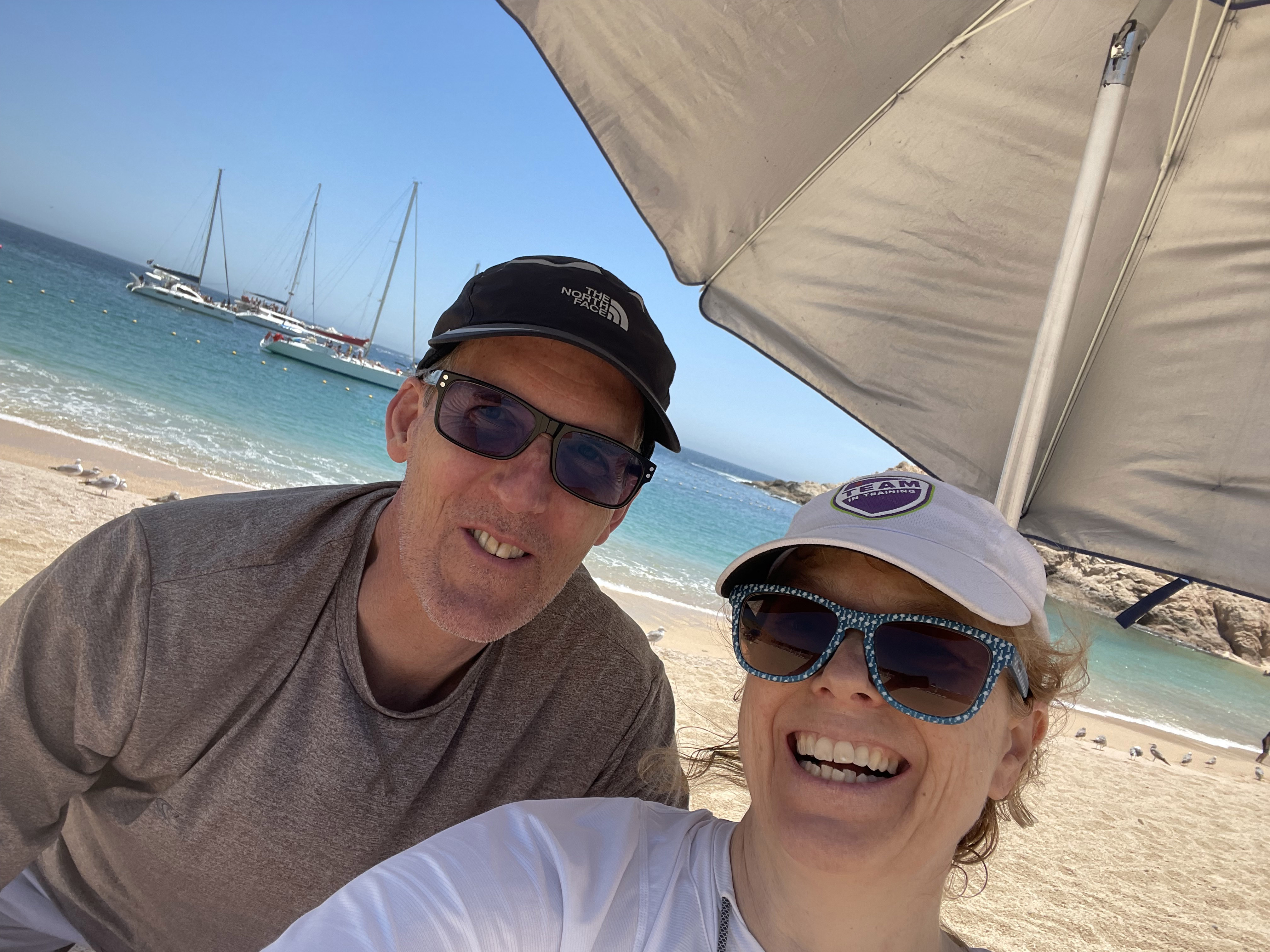Friday Focus: Work-life balance, integration or something new?

Brendan and Nettie La Belle-Hamer enjoy a moment on a Mexican beach.
April 15, 2022
— Nettie La Belle-Hamer, vice chancellor for research
¡Me encanta México! I just returned from a week in San Jose del Cabo with my sister, her husband and my husband. It was a fantastic trip! I went armed with plenty of unsolicited advice on how much to work (not at all) and how much to rest, relax, and recover (the entire time). It was well-meaning advice from good people who accused me of having no work-life balance. Excuse me? I disagree. But, it started me thinking — what does that even mean? So, I Googled it!
I found some interesting things that may or may not be true given that I found them with one Google search and made no effort to validate them. These interesting things to think about, not to be confused with data, led me down a path to a different conclusion. Come with me on the path and see if you agree.
First, remember that up until the standard work week was defined to be 40 hours in 1940, the Fair Labor Standards Act allowed 100-plus hour work weeks. Although the concept of work-life balance popped up as early as the 1930s, it was in the 1980s, associated with the women's liberation movement, that term really took hold. With women gaining freedom to explore careers outside the home, the expected relief from their mandatory career inside the home was not really happening for most women. Helen Reddy bragged that she could bring home the bacon AND fry it up in a pan, but is that really worth bragging about? I think she needed balance.
The term was co-opted by the general workforce to mean a need for less time at work to allow for more time at life outside of work. Balance, you see, is assumed to be achieved when you work less. The first-level solution offered for the work-life balance problems, flexible work hours, didn’t really allow for less work. Flex time at first meant you could shift when you did your 40 hours a week — different hours, not less.
Second, the concept of balance implies that there are two opposing forces — work and life. Moving away from that binary model led to the concept of work-life integration, which sounds good in theory. This utopia concept calls for a continuum of life activities that includes work, family, friends, and (for me) occasional trips to Mexico. Seamless integration – sounds good, right?
Guess what COVID gave us for two years! Work-life integration at its finest. We didn’t work from home so much as we lived at work. Seamlessly working, albeit in PJs, sweats, or yoga pants, from early in the morning to late at night, day in and day out. Work never stops when you allow it to integrate into every aspect of your life.
There has got to be something else and I think I am seeing what it may be by watching the younger generations around me. What if the problem is the yardstick we are measuring with is time? Work-life balance is defined by how much time you spend. Maybe we really should be focusing on energy. Happiness is found in spending your energy on things that matter — work, family, friends, and things that give you joy. While time is lost as it is spent, energy can grow! Purposeful work energizes you. Any activity that feels impactful and meaningful can generate energy rather than depleting it. Work as a generator of energy opens up a renewable source concept rather than the fixed source of time.
As we move into the next phase of finding a new normal let’s work on a broader definition of a flexible work life. We have learned a lot about ourselves and our work over the last two years. Working from home makes some people more productive while others struggle outside an office setting. What are the key elements for productive work to be done remotely? How much time does a team need to spend face-to-face in order to gel as a team? How do we ensure we are serving our customers’ needs? How do we ensure we are spending enough time on things other than work? We have a lot to figure out in the next few months about work-life balance in this new world in order to define productive flexibility for our work.
Let’s start with the purpose of our work and focus on what we want for ÃÛÌÒÓ°Ïñ, for our families, and for ourselves. Let that guide us to what we want to spend our energy on. Personally, I doubt it will require me to spend less time working in order to feel balanced. I love my job and it often provides me with new energy. Reflecting on how I want to spend that energy may, however, mean I plan more adventures with my family. What about you?
¡Viva México!
Friday Focus is a column written by a different member of ÃÛÌÒÓ°Ïñ’s leadership team every week.


